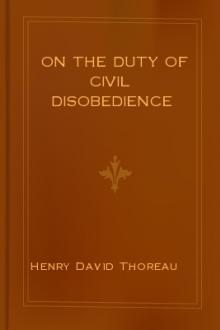family was enlisted, and I kept a little girl writing what was otherwise unintelligible. The geography getting obscure, we called for chalk, and the greasy oiled tablecloth having been wiped—for it needed no French, but only a sentence from the universal language of looks on my part, to indicate that it needed it—we drew the St. Lawrence, with its parishes, thereon, and thenceforward went on swimmingly, by turns handling the chalk and committing to the tablecloth what would otherwise have been left in a limbo of unintelligibility. This was greatly to the entertainment of all parties. I was amused to hear how much use they made of the word
oui in conversation with one another. After repeated single insertions of it, one would suddenly throw back his head at the same time with his chair, and exclaim rapidly, “
oui! oui! oui! oui!” like a Yankee driving pigs. Our host told us that the farms thereabouts were generally two acres, or three hundred and sixty French feet wide, by one and a half leagues, (?) or a little more than four and a half of our miles deep. This use of the word “acre” as long measure arises from the fact that the French acre or arpent, the arpent of Paris, makes a square of ten perches, of eighteen feet each on a side, a Paris foot being equal to 1.06575 English feet. He said that the wood was cut off about one mile from the river. The rest was “bush,” and beyond that the “Queen’s bush.” Old as the country is, each landholder bounds on the primitive forest, and fuel bears no price. As I had forgotten the French for “sickle,” they went out in the evening to the barn and got one, and so clenched the certainty of our understanding one another. Then, wishing to learn if they used the cradle, and not knowing any French word for this instrument, I set up the knives and forks on the blade of the sickle to represent one; at which they all exclaimed that they knew and had used it. When
snells were mentioned they went out in the dark and plucked some. They were pretty good. They said they had three kinds of plums growing wild—blue, white, and red, the two former much alike and the best. Also they asked me if I would have
des pommes, some apples, and got me some. They were exceedingly fair and glossy, and it was evident that there was no worm in them; but they were as hard almost as a stone, as if the season was too short to mellow them. We had seen no soft and yellow apples by the roadside. I declined eating one, much as I admired it, observing that it would be good
dans le printemps, in the spring. In the morning when the mistress had set the eggs a-frying she nodded to a thickset, jolly-looking fellow, who rolled up his sleeves, seized the long-handled griddle, and commenced a series of revolutions and evolutions with it, ever and anon tossing its contents into the air, where they turned completely topsy-turvy and came down t’other side up; and this he repeated till they were done. That appeared to be his duty when eggs were concerned. I did not chance to witness this performance, but my companion did, and he pronounced it a masterpiece in its way. This man’s farm, with the buildings, cost seven hundred pounds; some smaller ones, two hundred.
In 1827, Montmorenci County, to which the Isle of Orleans has since been added, was nearly as large as Massachusetts, being the eighth county out of forty (in Lower Canada) in extent; but by far the greater part still must continue to be waste land, lying, as it were, under the walls of Quebec.
I quote these old statistics, not merely because of the difficulty of obtaining more recent ones, but also because I saw there so little evidence of any recent growth. There were in this county, at the same date, five Roman Catholic churches, and no others, five curés and five presbyteries, two schools, two corn-mills, four sawmills, one carding-mill—no medical man, or notary or lawyer—five shopkeepers, four taverns (we saw no sign of any, though, after a little hesitation, we were sometimes directed to some undistinguished hut as such), thirty artisans, and five river crafts, whose tonnage amounted to sixty-nine tons! This, notwithstanding that it has a frontage of more than thirty miles on the river, and the population is almost wholly confined to its banks. This describes nearly enough what we saw. But double some of these figures, which, however, its growth will not warrant, and you have described a poverty which not even its severity of climate and ruggedness of soil will suffice to account for. The principal productions were wheat, potatoes, oats, hay, peas, flax, maple-sugar, etc., etc.; linen, cloth, or étoffe du pays, flannel, and homespun, or petite étoffe.
In Lower Canada, according to Bouchette, there are two tenures—the feudal and the socage. Tenanciers, censitaires, or holders of land en roture, pay a small annual rent to the seigneurs, to which “is added some article of provision, such as a couple of fowls, or a goose, or a bushel of wheat.” “They are also bound to grind their corn at the moulin banal, or the lord’s mill, where one fourteenth part of it is taken for his use” as toll. He says that the toll is one twelfth in the United States, where competition exists. It is not permitted to exceed one sixteenth in Massachusetts. But worse than this monopolizing of mill rents is what are called lods et ventes, or mutation fines. According to which the seigneur has “a right to a twelfth part of the purchase-money of every estate within his seigniory that changes its owner by sale.” This is over and






Comments (0)